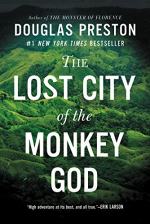|
This section contains 775 words (approx. 2 pages at 400 words per page) |

|
Summary
Preston notes that low population densities prevented diseases from spreading in primitive America. However, when the population density increased, diseases started to spread. Jared Diamond has studied why Old World diseases wiped out people in the New World, while the reverse did not occur. He found that the key was that in the Old World, the development of animal husbandry led to the domestication of animals. After the domestication of animals, people settled down in villages and towns, establishing a staging ground for epidemics that biologists called "crowd diseases." As the population faced these diseases, many people, particularly children, died, but not everyone died. Survivors often had genes that helped them survive, and they passed their resistance on to the next generation. That is why the Old World established some resistance to these diseases. In the New World, however, no epidemics...
(read more from the Chapter 27: We Became Orphans Summary)
|
This section contains 775 words (approx. 2 pages at 400 words per page) |

|




